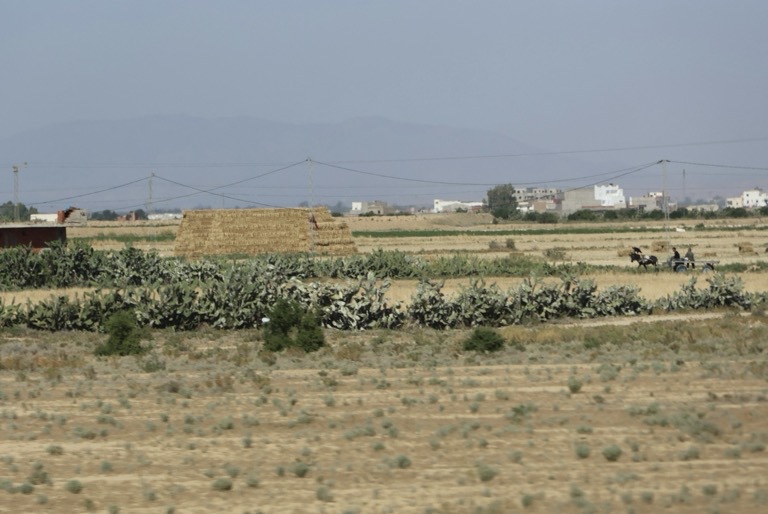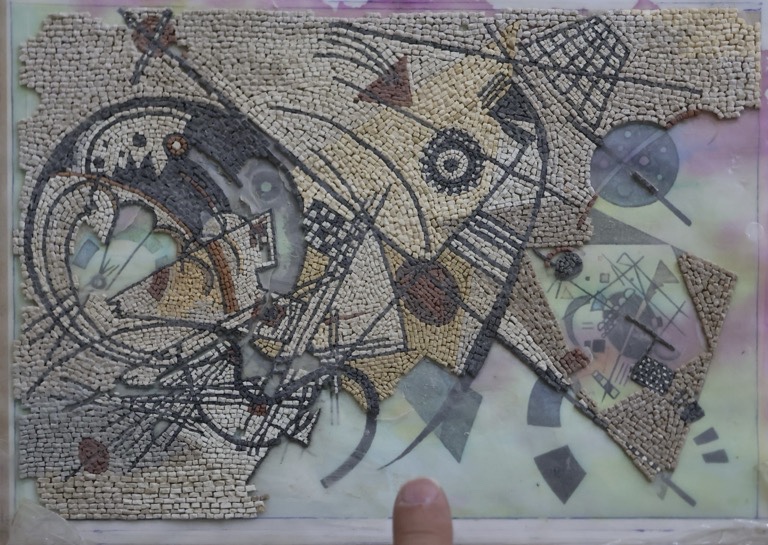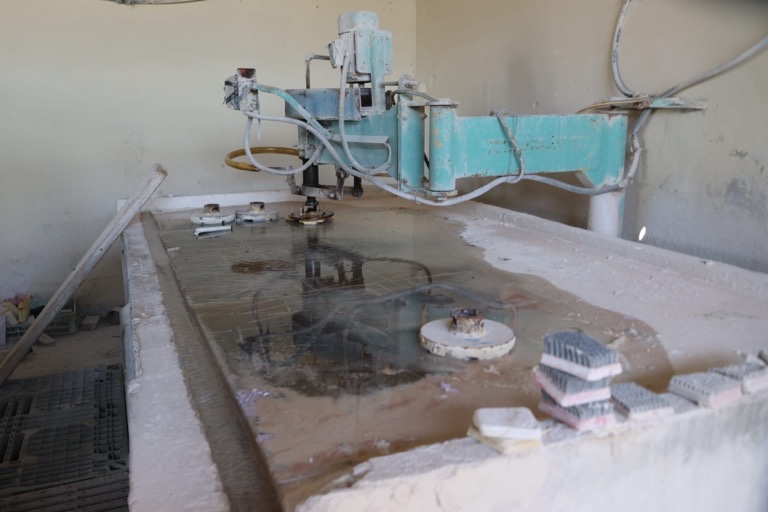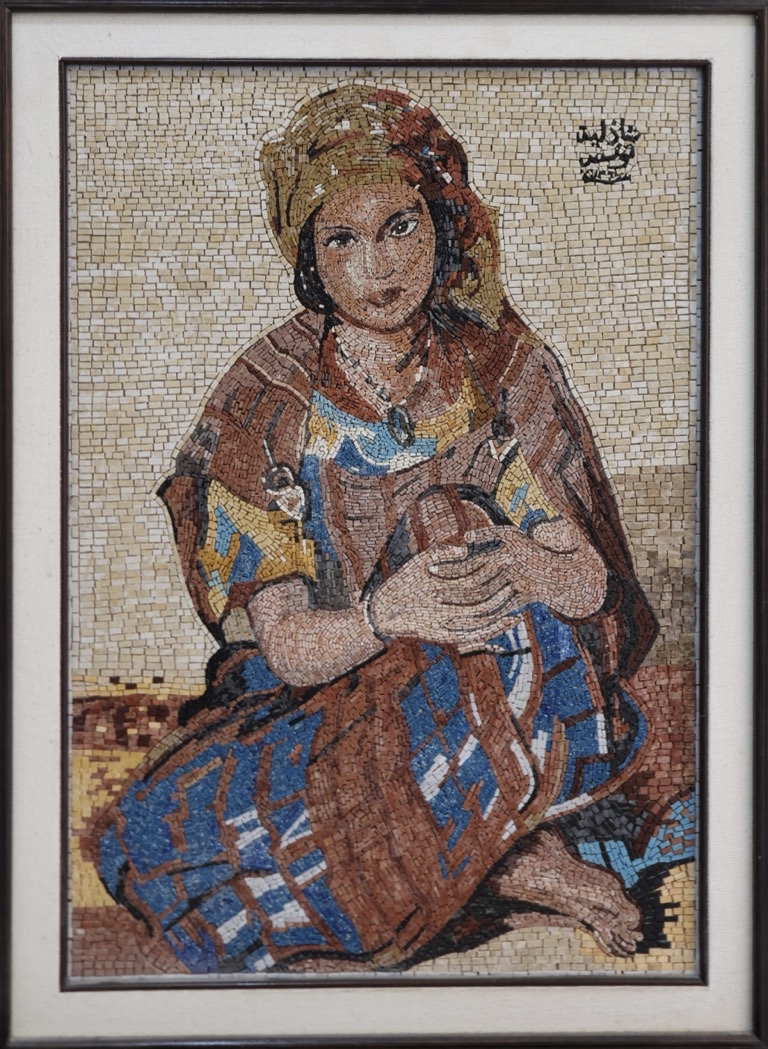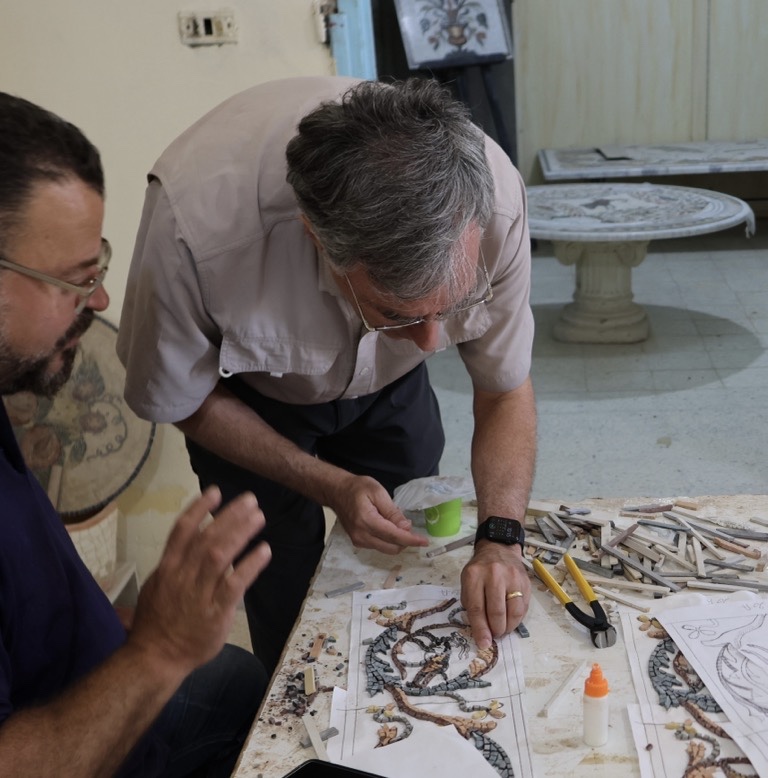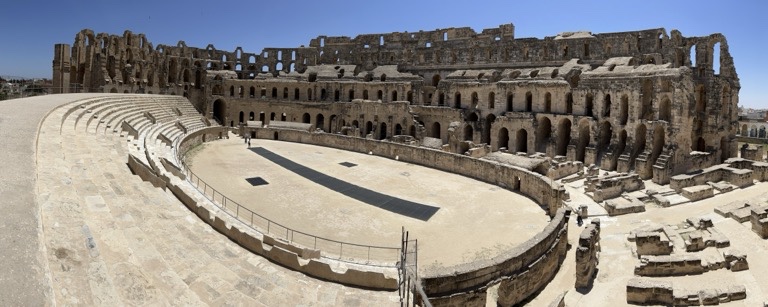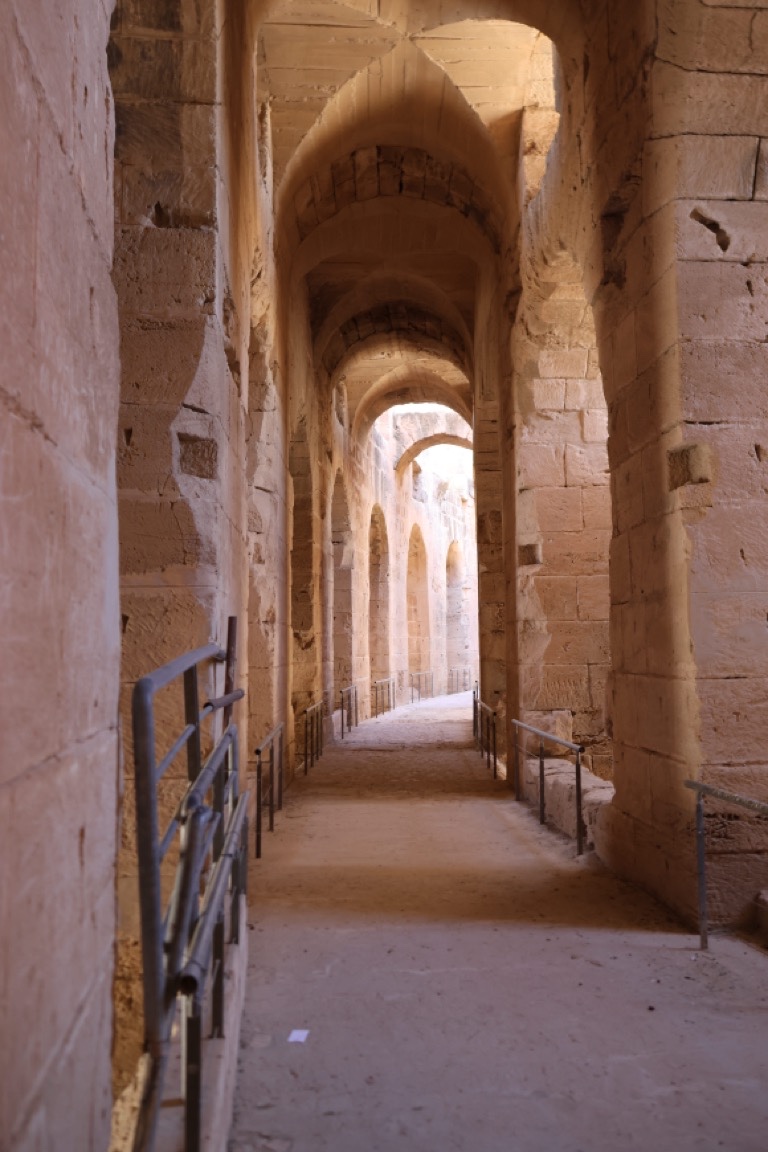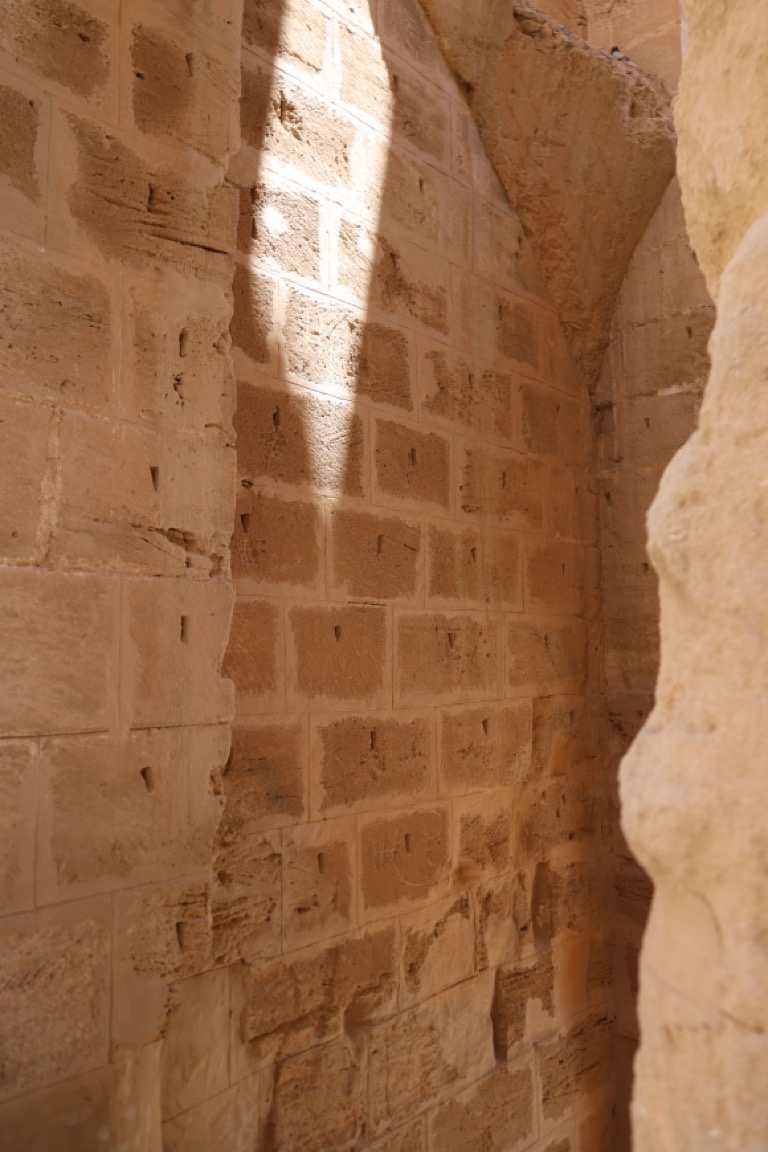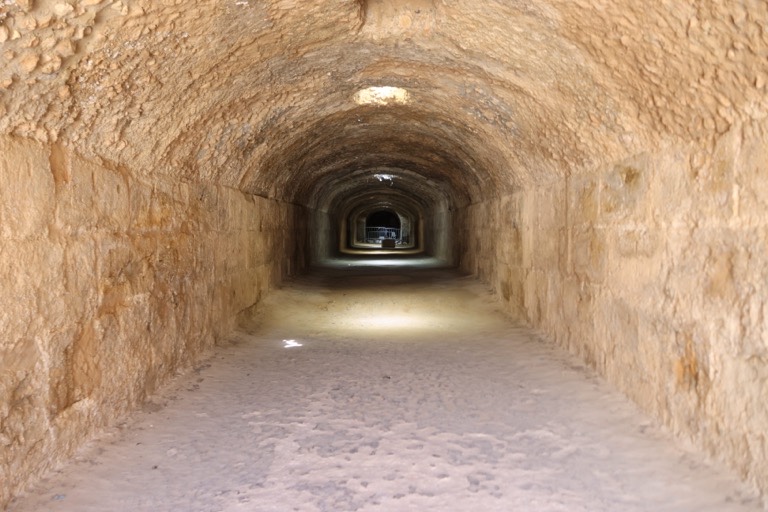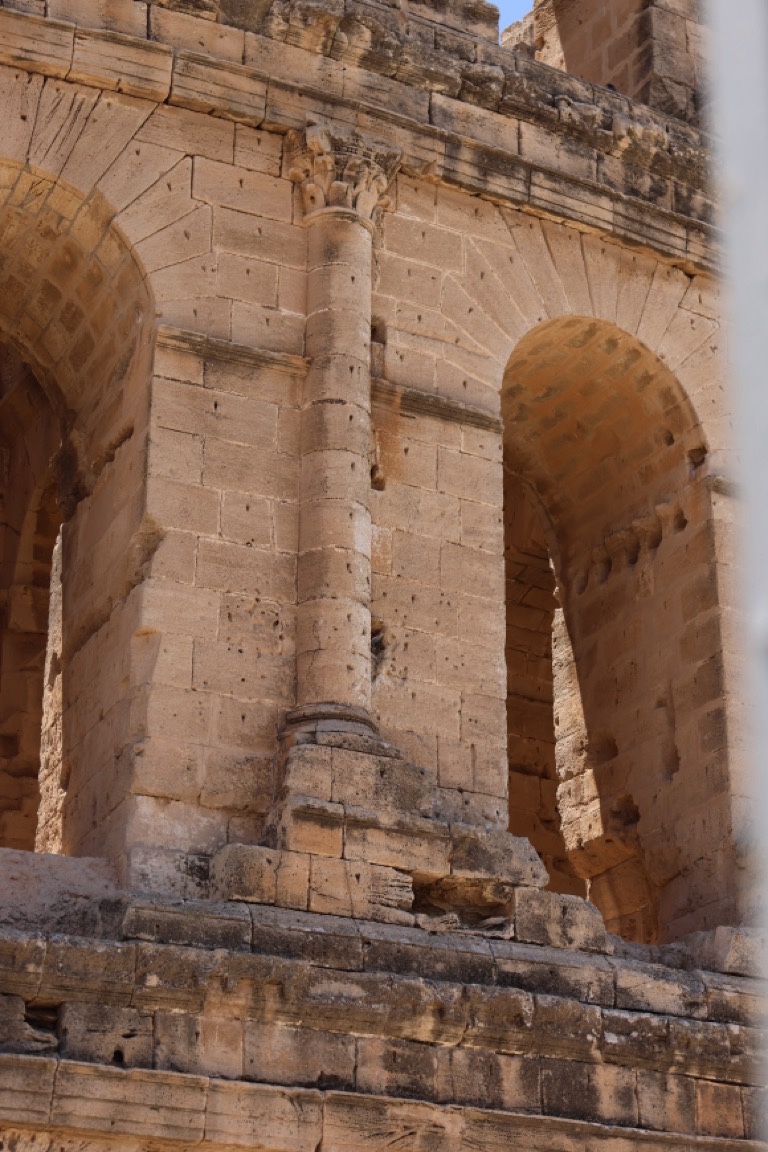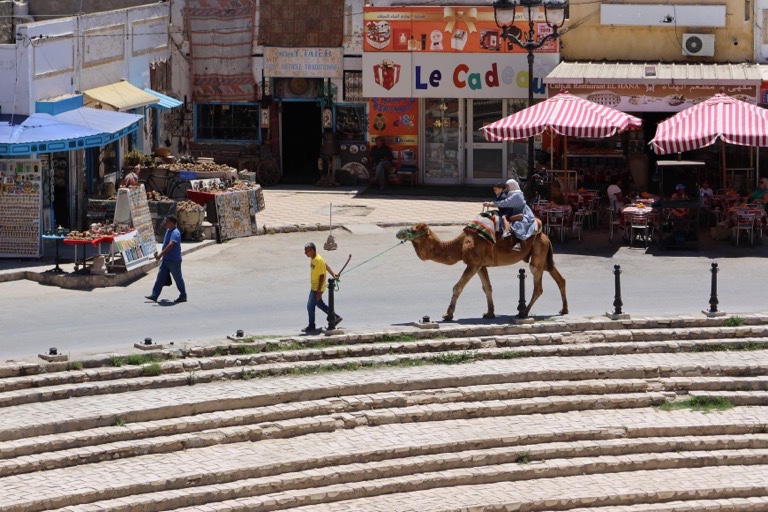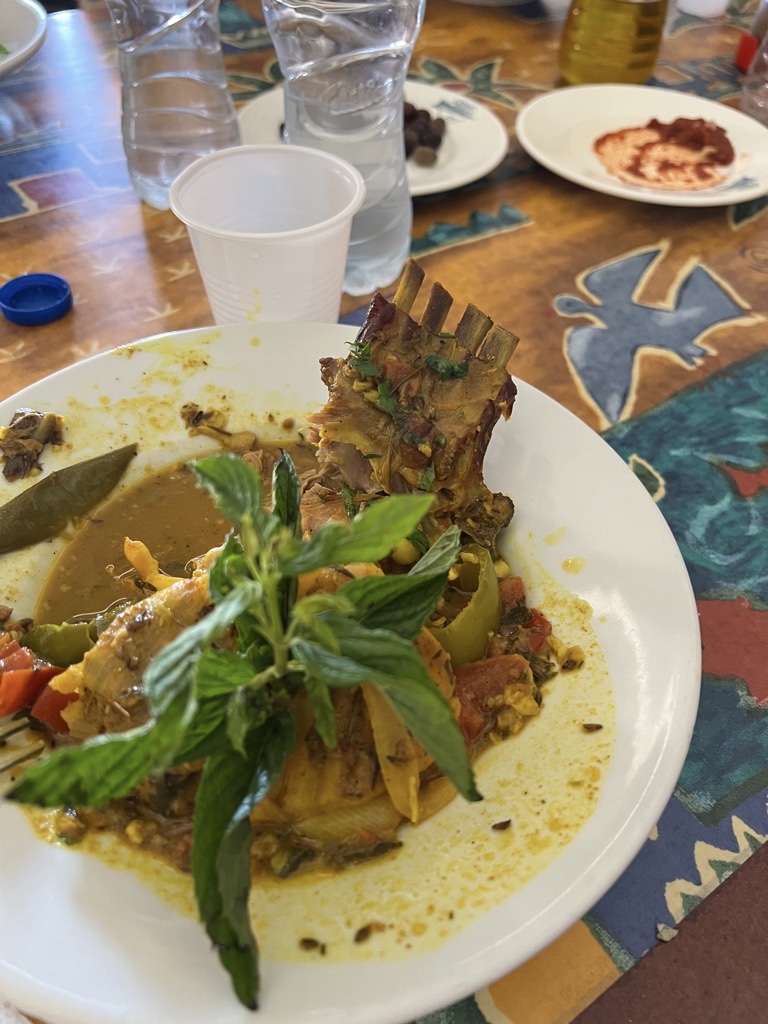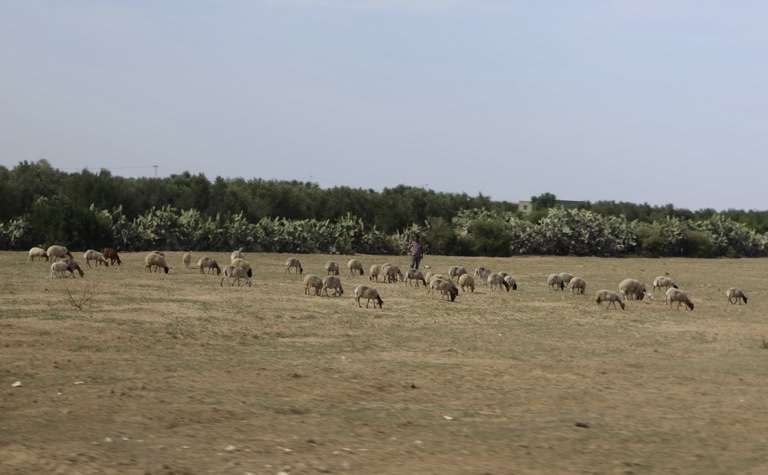on
El Djem
Today we’ve chosen to take the optional day trip to the UNESCO World Heritage Site of El Djem and the old Roman city of Thysdrus.
We start the day with breakfast at the hotel and a 8:30 departure to El Djem.
Discussions on olive trees and banking during the bus ride there. Thysdrus was the center of olive tree farming in Roman times and, they still grow in the area.
The old variety takes 8-10 years to first harvest after planting. It lives 300 years and does not need irrigation, but needs more space between the trees, so there is enough moisture per tree. The newer variety (in the last 20 years) Spanish olives takes 2-3 years to first harvest but only lives 70-80 years and must be irrigated, but then can be planted closer together. I could see olive fields that were irrigated as we drove by. There is a difference in taste between the two varieties as well.
The olives are pressed with cold water, which makes the olive oil taste better. It takes 5kg of olives to make 1L of olive oil. The leftovers are used for soap, fertilizer, and high protein animal feed.
We passed several trucks loaded with bales of wheat straw. The wheat harvest is going on, I saw several small combines taking wheat, maybe a 12 ft head. No cab on the combine, just some canvas overhead to block the sun. The straw is stacked in the fields. I saw several hayracks, they are a little smaller than what I’m used to in the US.
Tunisia has three major banks and now several foreign banks are allowed to operate as well. But the fees are high. Three dinars to withdraw 50 dinars cash at an ATM is common. Society still uses cash mostly, credit cards are not common and fees for them are high. We passed a line of people at the post office and our guide said they were there to get their monthly salary as it was near the end of the month, often paid on the 26th of the month. Credit cards are not widely used, our guide gets a 10% discount for paying his mobile phone bill with a credit card as incentive to do so.
M-Pesa which started in East Africa or something like it hasn’t reached Tunisia.
Our first stop was a Mosaic factory. The owner doesn’t use the Roman technique of setting the tessara in a mortar base. Rather he prints the design as a mirror image on paper and glues the tessara to the paper.
Then he pours epoxy resin over it and embeds a layer of fiberglass in the resin for backing. Then they turn it over and polish what was the bottom side when it was assembled.
This reverses the image as well, hence starting with a mirror image on paper.
I got to cut and place a tessera in a piece. They use a small pinchers to cut the marble pieces. It cuts quite easily. Then dip it in some runny glue and place it on the paper.
After that we went to the UNESCO World Heritage Site Roman Amphitheater in Thysdrus. It is considered the third largest Roman amphitheater. It was damaged by the Germans as they left North Africa in World War II.
We were able to go down under in this Amphitheater.
Our guide told the story of the Berber queen Kahina who took refuge in the amphitheater in 699 AD when fighting the invading Arabs. She supposedly escaped through a tunnel to the sea (30 km away) that hasn’t been found.
Looking out from the second story, I saw a camel ride for tourists.
Then a short walk to lunch at a local Tunisian restaurant, with a choice of fish, rabbit or lamb.
Then to El Djem museum which contains the mosaics from a few villas in the rich section of Thysdrus. The museum itself is house that was next to the archeological site and was donated to house the mosaics.
They have reconstructed portions of one of the largest villas and the mosaics are left in place.
A very quiet ride back to Kairouan, as most folks to a nap on the ride home.
When we got back to the hotel, we went for a swim and had the pool to ourselves and the swallows. The swallows didn’t seem too afraid of us, coming within a foot of our heads as they took a drink on the wing.
